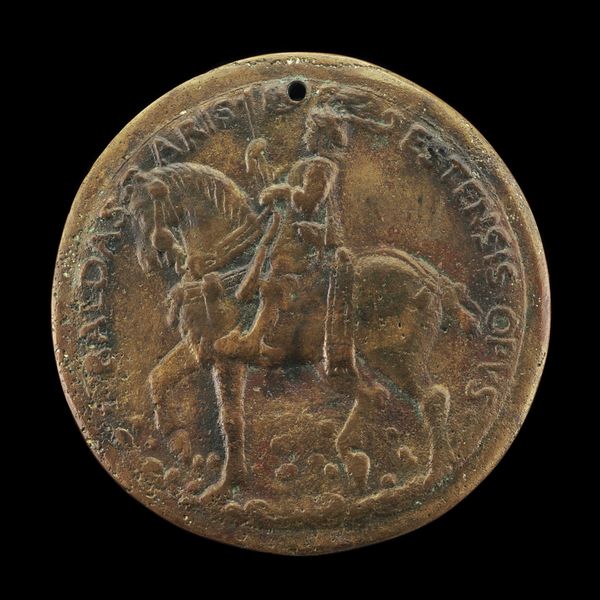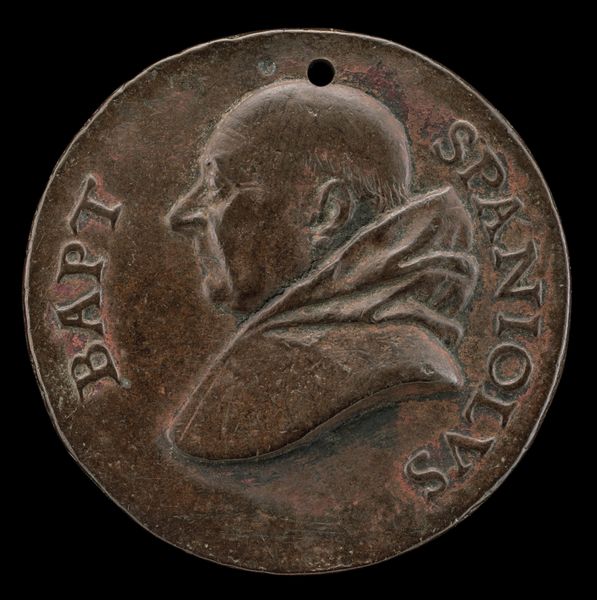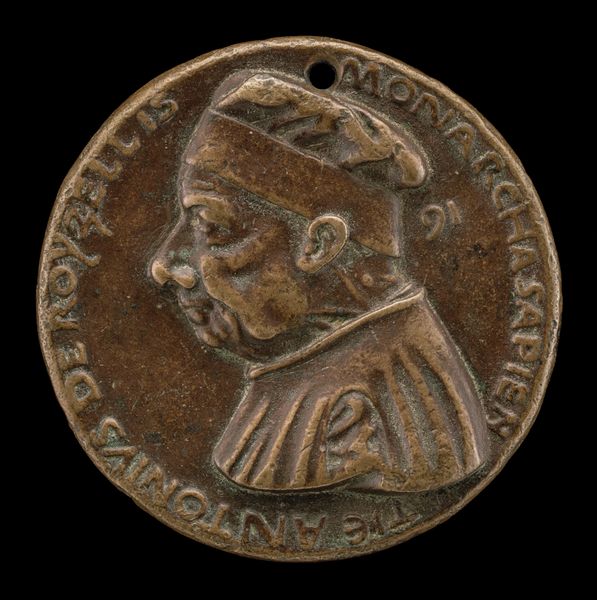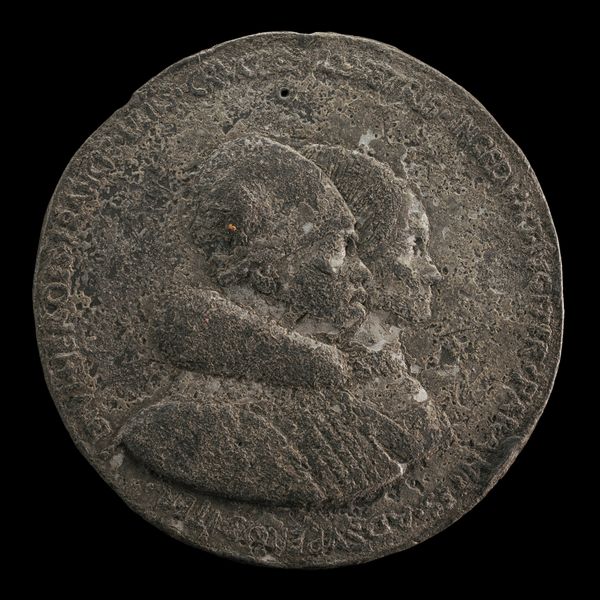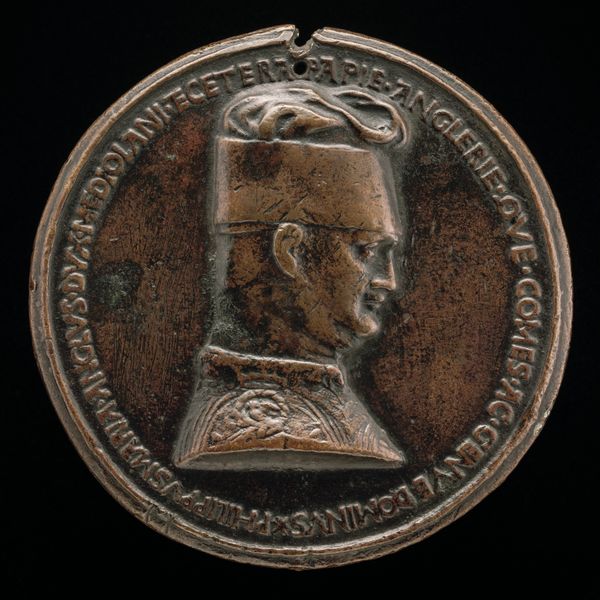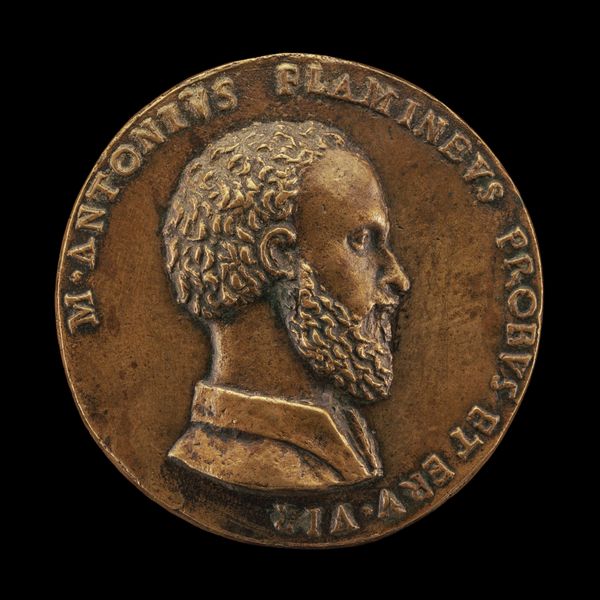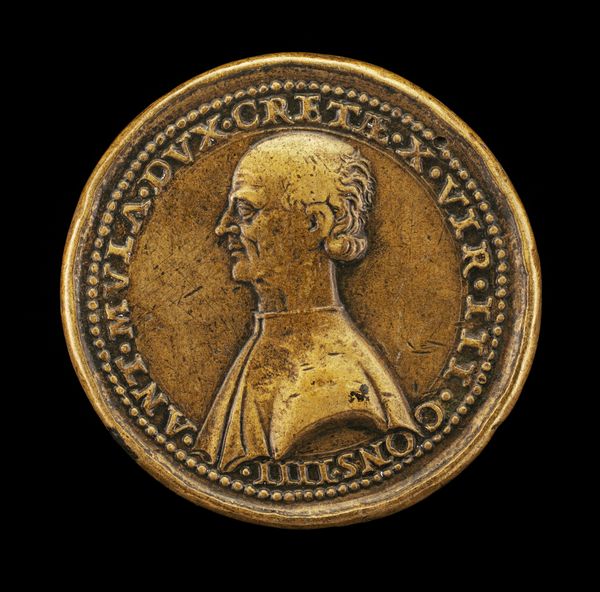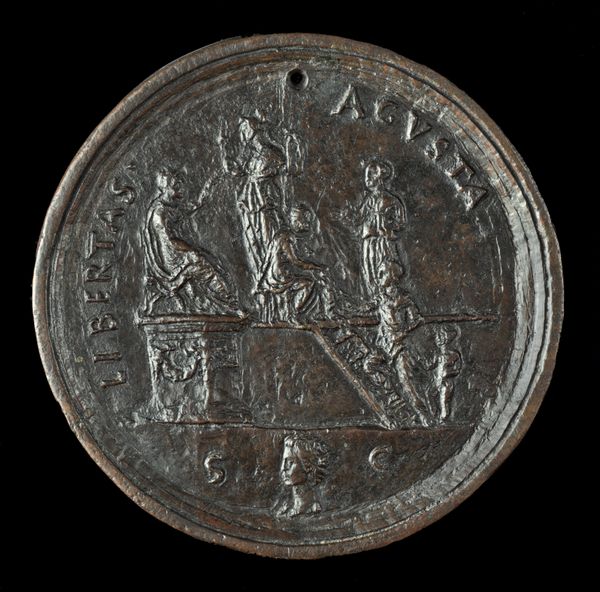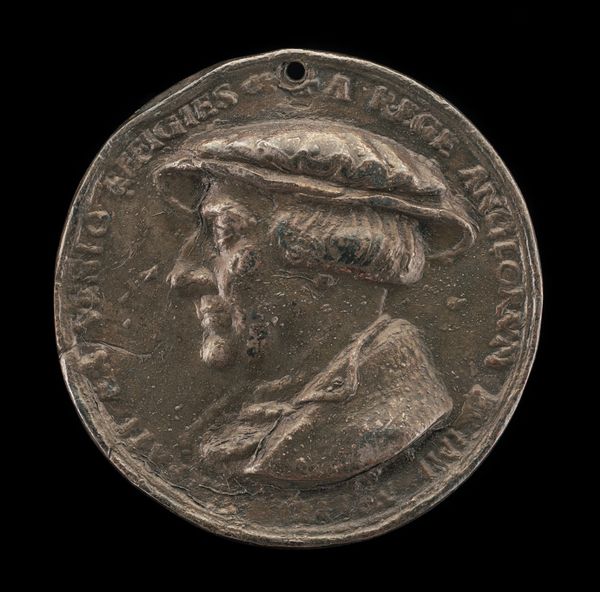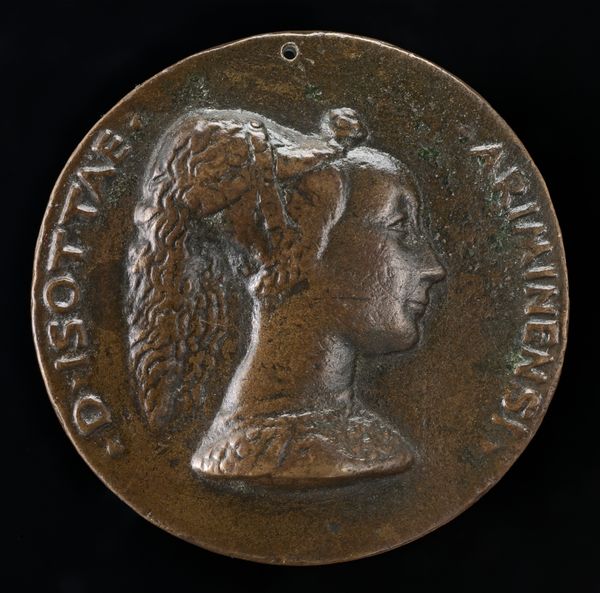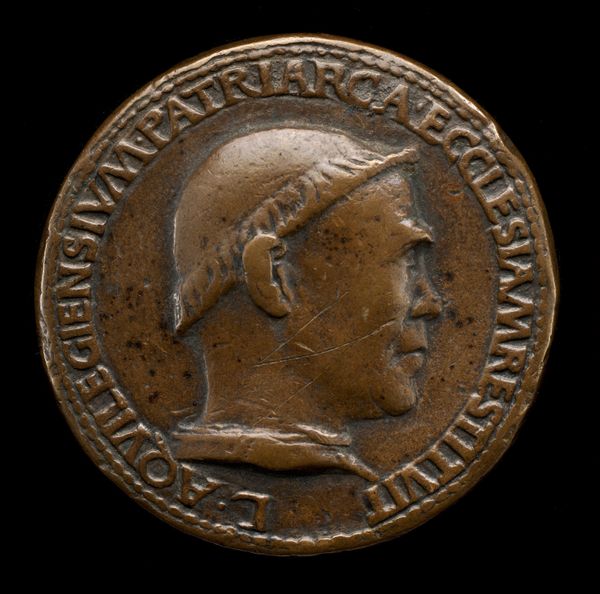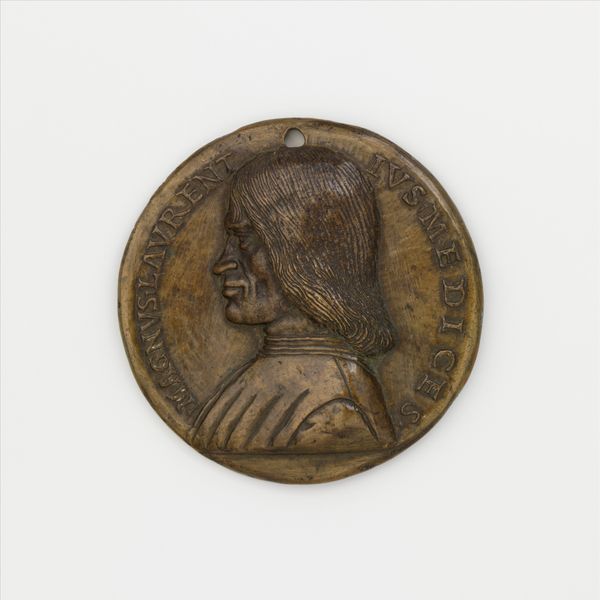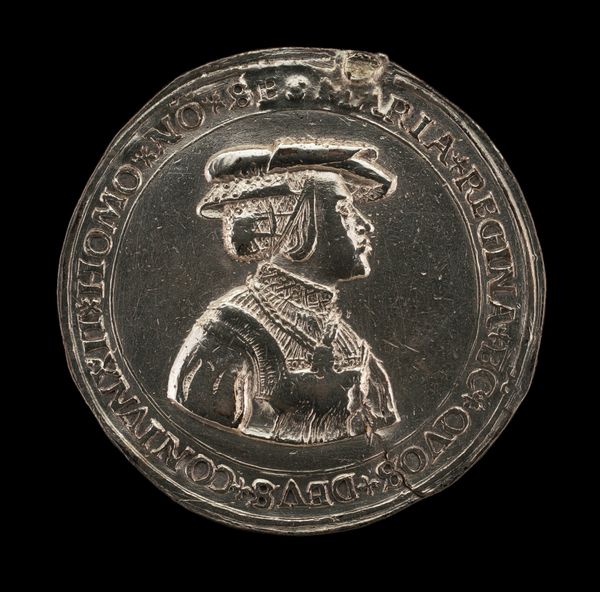![Ercole I d'Este, 1431-1505, Duke of Ferrara, Modena, and Reggio 1471 [obverse] by Baldassare d'Este](/_next/image?url=https%3A%2F%2Fd2w8kbdekdi1gv.cloudfront.net%2FeyJidWNrZXQiOiAiYXJ0ZXJhLWltYWdlcy1idWNrZXQiLCAia2V5IjogImFydHdvcmtzLzEzZTU4MDM4LWRkMGEtNGMwNC1iODMzLTAyYzhiNDFhNTQyZS8xM2U1ODAzOC1kZDBhLTRjMDQtYjgzMy0wMmM4YjQxYTU0MmVfZnVsbC5qcGciLCAiZWRpdHMiOiB7InJlc2l6ZSI6IHsid2lkdGgiOiAxOTIwLCAiaGVpZ2h0IjogMTkyMCwgImZpdCI6ICJpbnNpZGUifX19&w=3840&q=75)
Ercole I d'Este, 1431-1505, Duke of Ferrara, Modena, and Reggio 1471 [obverse] c. 1472
0:00
0:00
relief, bronze, sculpture
#
portrait
#
medal
#
sculpture
#
relief
#
bronze
#
sculpture
#
italian-renaissance
Dimensions: overall (diameter): 9.25 cm (3 5/8 in.) gross weight: 221.66 gr (0.489 lb.) axis: 12:00
Copyright: National Gallery of Art: CC0 1.0
Curator: This is the obverse side of a bronze medal depicting Ercole I d'Este, Duke of Ferrara, Modena, and Reggio. It dates from around 1472 and is attributed to Baldassare d'Este. Editor: The relief has a stately, reserved aura, almost solemn, don’t you think? The metalwork appears remarkably tactile. It’s difficult not to focus on how heavy the metal seems; the entire thing feels robust. Curator: Indeed, the composition, tightly framed within the circular format, enhances that feeling of contained power. The bust is rendered in profile, allowing for a clarity of line and form; a very deliberate choice in Renaissance portraiture to communicate authority through a sense of classical purity. Editor: The decision to cast this in bronze certainly emphasizes not only the importance but the expense tied to creating a likeness. Was the distribution limited or intended for widespread viewership? How would a regular person from that era engage with the material choice itself? Curator: These medals served a multifaceted purpose; they were commissioned by the sitter as propaganda but were also gifted to dignitaries. The material's value signaled status. Beyond that, though, there’s an intentional design. Note how the inscription wraps around the perimeter. Semiotically, this design choice communicates enclosure, reinforcing Ercole's domain—a kind of visual staking of claim, if you will. Editor: Which draws me to questions about the artisans, like d’Este, commissioned to create this effect. How were labor and bronze material sourced? How were artists trained, and how much latitude would they have when deciding design and layout choices? Curator: Undoubtedly there was an interaction of directives and artistic ingenuity. If you focus closely on Ercole’s features, the sharpness with which d’Este captures his likeness using minimal detailing is quite superb. The textures and light, all emerging from that flat plane; there's an intelligent visual hierarchy, too. Editor: Knowing that its construction was born of labor-intensive practices changes my engagement with the image itself, but then returning to a purely visual sense, the texture, even now, makes me wish to hold it. Curator: Understanding the interplay between intention and medium and how it operates symbolically is crucial to understanding Renaissance aesthetics. Editor: Considering the object's full physical production really complements the more formal qualities you see reflected in the finished work. Thank you.
Comments
No comments
Be the first to comment and join the conversation on the ultimate creative platform.
